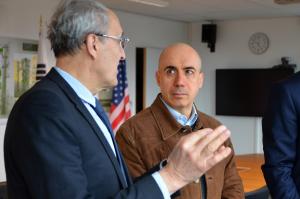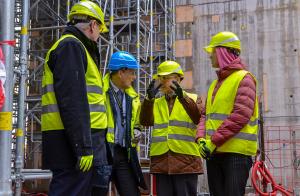For Silicon Valley philanthropist ITER is "the only way"
One is planning to send tiny spacecrafts to the nearest stellar system; the other aims to bring the power of the stars to Earth. Yuri Milner, Russian-born entrepreneur turned Silicon Valley philanthropist and the ITER Project obviously have a lot in common: a vision for mankind's future, a capacity to invest in a long-term scientific and technological venture and, above all, the determination, against all odds, to pursue a dream that can alter the course of history.
Last Thursday, on his way back to California, Yuri Milner made a stop at ITER. "I knew that something amazing was happening here. I wanted to see it with my own eyes."
Milner's most spectacular project and the fusion quest are approximately on the same timeline: the Breakthrough Starshot initiative that he developed with the late Stephen Hawking aims to send hundreds of lightsail-propelled microprobes to the Proxima Centauri system, 4.37 light years (40 trillion kilometres) distant. Milner has invested USD 1 million of his own money to fund 15 to 20 years of the R&D necessary to the project. Facebook's Mark Zuckerberg, Google's Sergei Brin, and a few other Silicon Valley luminaries have now joined him in this awe-inspiring interstellar venture.



